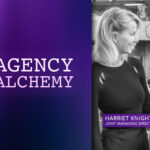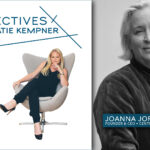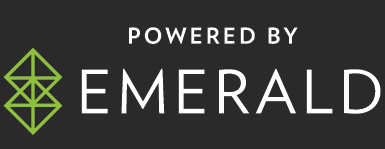By Meredith Vaughan, CEO & Marci Goodman-Dobrow, Director of Operations, Vladimir Jones
In a turbulent era amidst shifting client-agency dynamics, when holdcos. are shutting down, merging or even buying agencies while trying to navigate the challenges of AI, the future of agencyland has never felt more uncertain.
This time, we really are at a critical inflection point.
While being nimble and agile in response to the shifting tides of our business is important, one shouldn’t lose sight of your shop’s blueprint for sustainable success.
When change is coming from every direction, it’s human nature to batten the hatches. Instead, conjuring the vision that makes your shop unique, or at least distinct, and then summoning the courage to execute on it is the road map for creating an indelible legacy.
Establishing a vibrant, rock-solid foundation for sustainable legacy-building requires stability, transparency, and humanity.
Stability In the Face of Chaos
Iconic FCB co-founder Fairfax Cone is known to have said “the inventory goes down the elevator every night.” That has been true in every advertising era. Even with all of the tools that now help brand marketers engage with the consumer, it’s still human beings that remain the drivers of persuasion.
Advertising has always been a beacon for imaginative and daring talent. While the lore of our industry features brilliant renegades, who pushed the boundaries, in these times, the road of opportunity seems filled with potholes and roadblocks that previous generations didn’t have to navigate.
Currently there is zero stability for talent to grow their careers within the holdco. model.
While there is relative consistency within C-Suites, the vast majority of talent are faced with a frustrating journey, having to maneuver through and around thickets of bureaucracy and often toxic politics.
There has always been a mercenary ethos within our industry, which was tolerated during the glory days of 15% agency commissions. But when the “inventory”—to quote Fairfax Cone again—is turning over at unprecedented levels, then culture and camaraderie atrophy, which is bad for everyone—talent, agency, and client. Ambition is the lifeblood of everything we do in this business and these days, it seems much of it has been dampened.
Agency leaders should commit to replacing the transient feeling that pervades so many shops with an esprit de corps that is genuine. By creating a family atmosphere—in some instances, your agency may actually be a family business–, you can encourage an environment, where every team member feels seen, heard, and appreciated but also held rigorously accountable. The flywheel effect is a culture of possibility and boundless creativity, leading to the stability that eludes too many shops.
Transparency is Foundational
Another key legacy building block is greater transparency. Agencies have become increasingly Kremlin-like both with clients as well as staff. This lack of transparency fuels distrust, even paranoia, among those without access to the detailed information that leaders have. By definition, leaner and not necessarily meaner indie shops are better suited than holdcos. to walk the transparency walk. We don’t have the luxury of throwing money at every problem and hoping it works itself out. Not only is this approach not conducive to sustainability, but it also creates chaos. Don’t write checks you don’t intend to cash. You’re better off managing your P&L with total transparency. People’s livelihoods should never be a heartless proxy to increasing an agency’s bottom line. When staff knows why you’re doing what you’re doing, whether they agree with it or not, you are building trust.
When hiring talent, it helps to treat the process as an emotional investment, where gut instinct matters even more than rational evaluation. On an individual level, best practices in transparency start on each team member’s first day. Onboarding should not just be practical and tactical but rather agency leadership should focus on seeing the new person as an individual first and foremost and not through the myopic lens of the role they’ve been hired to perform. Have each person create their own vision for the future. When we invest in them, each team member should also feel invested in the agency’s success.
Transparency Is Meaningless Without Humanity
Transparency is not about being nice, but rather about being kind. Vulnerability rooted in honesty is critical for a trusting environment. Having people know exactly where they stand is also a more efficient way of running a group. Acknowledgement and encouragement as well as constructive criticism should be essential components in defining each person’s legacy on day one and then evolving it as they progress.
Putting career pathing front and center to ongoing dialogue is vital. These conversations typically evaporate in agencyland as communications internally become dominated by the tasks at hand and short horizons that have been further shrunk by the accelerating effects of technology.
But here is the surprising bit; all of this can happen at speed to meet the moment of 21st century advertising. We all need to think fast and act quickly. Codify Speed! Nowadays, it’s not that unusual for an agency to go from contract signing to a new client’s campaign launch in 21 days. Methodical speed is only possible if failure and risk are supported.
By building unshakable pillars of stability, transparency, and humanity, we create a clear path to achieving a win-win-win for our industry and leaving behind a legacy we can all be proud of and excited about.






